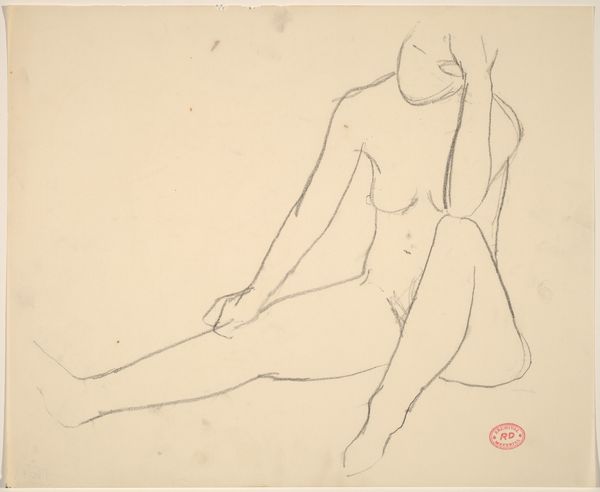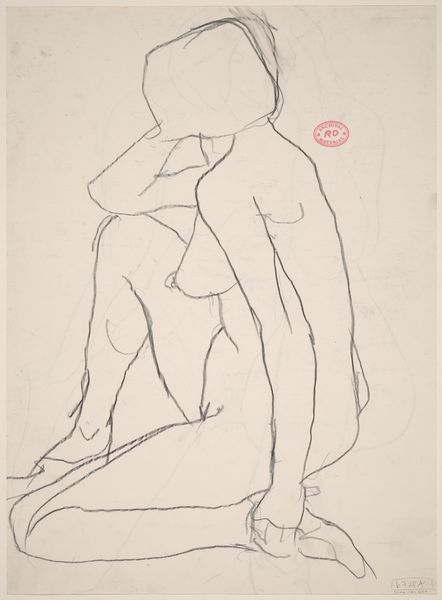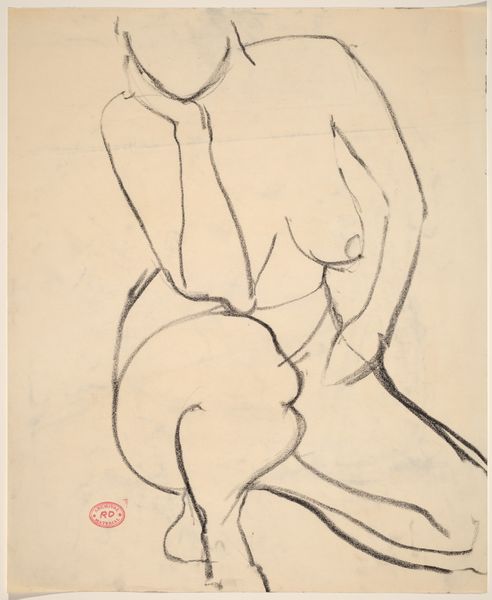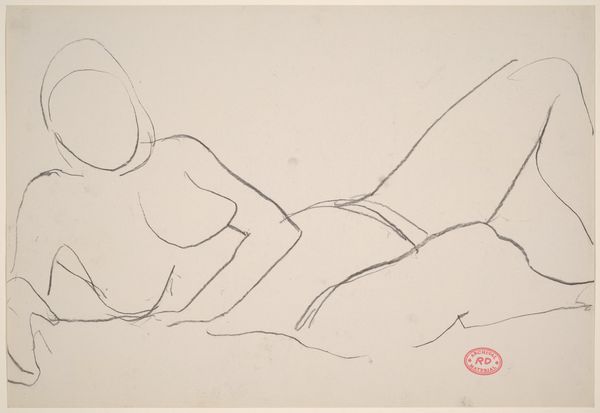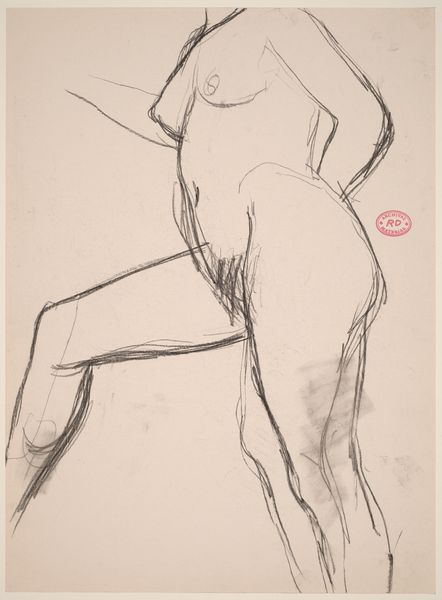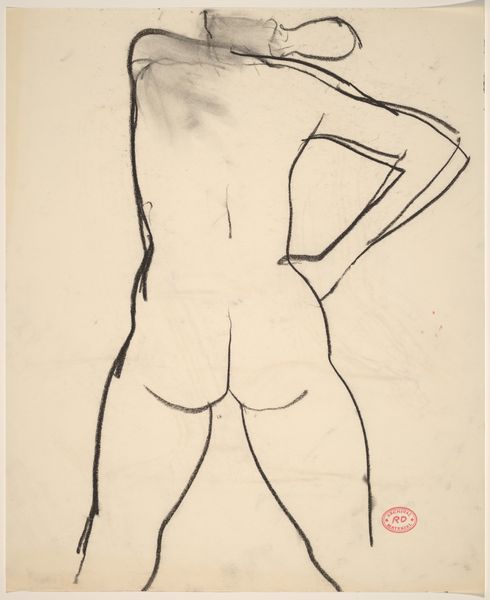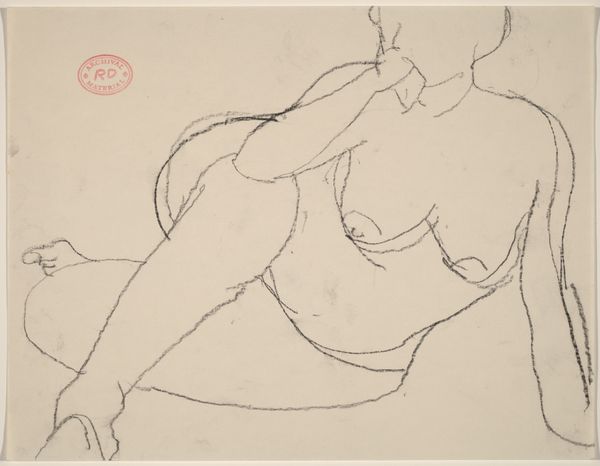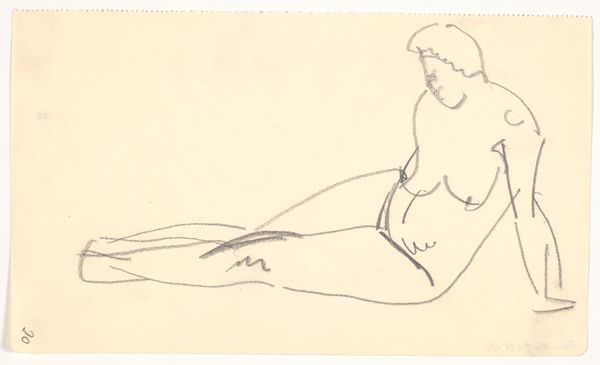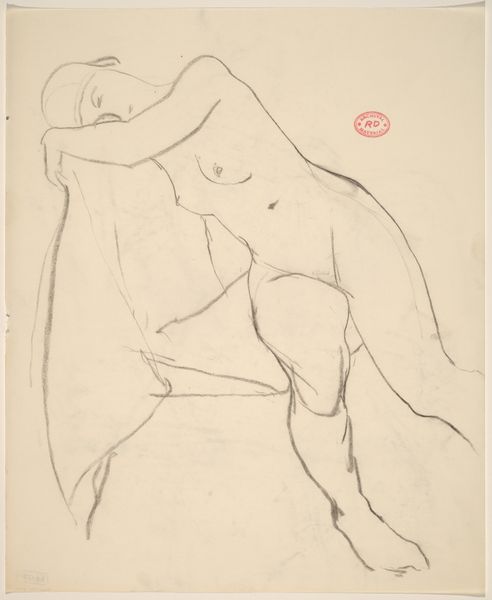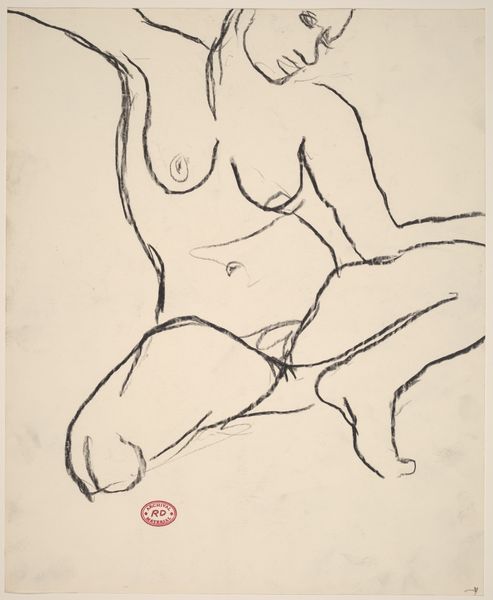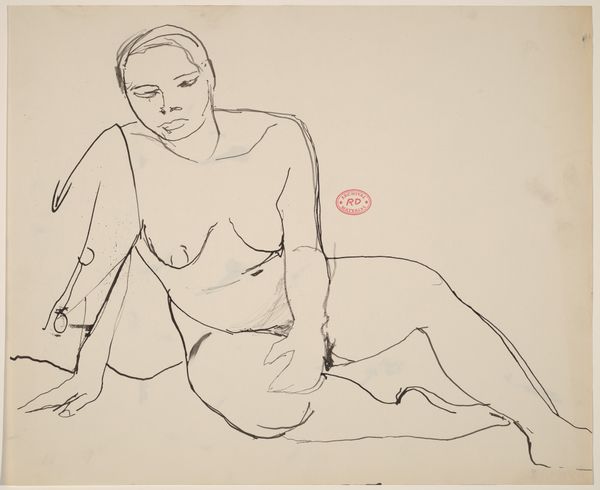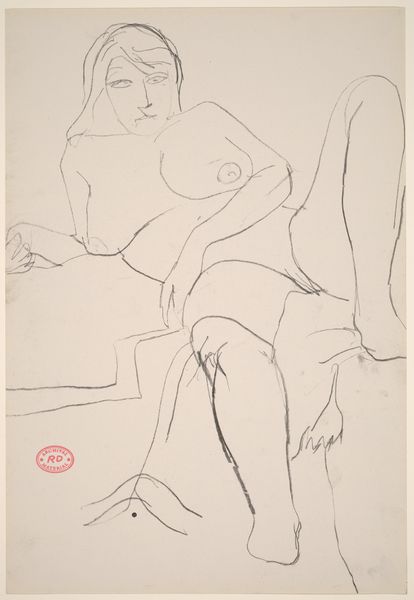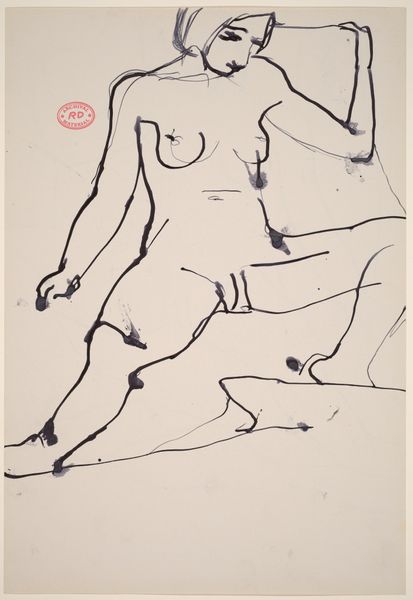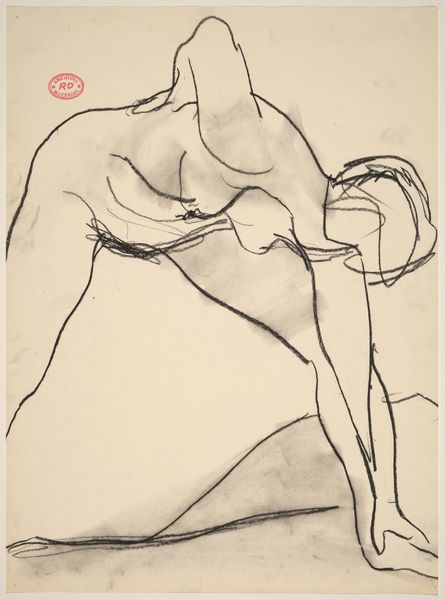![Untitled [nude resting on her side and lifting up on her right arm] by Richard Diebenkorn](/_next/image?url=https%3A%2F%2Fd2w8kbdekdi1gv.cloudfront.net%2FeyJidWNrZXQiOiAiYXJ0ZXJhLWltYWdlcy1idWNrZXQiLCAia2V5IjogImFydHdvcmtzL2MxMTJkMmZmLTU1ZmItNDkwNS1iYWRmLTg4NThiN2Y4OWRhMi9jMTEyZDJmZi01NWZiLTQ5MDUtYmFkZi04ODU4YjdmODlkYTJfZnVsbC5qcGciLCAiZWRpdHMiOiB7InJlc2l6ZSI6IHsid2lkdGgiOiAxOTIwLCAiaGVpZ2h0IjogMTkyMCwgImZpdCI6ICJpbnNpZGUifX19&w=3840&q=75)
Untitled [nude resting on her side and lifting up on her right arm] 1955 - 1967
0:00
0:00
drawing, ink, pen
#
portrait
#
abstract-expressionism
#
drawing
#
ink drawing
#
pen sketch
#
pencil sketch
#
etching
#
figuration
#
bay-area-figurative-movement
#
ink
#
line
#
pen
#
nude
#
modernism
Dimensions: overall: 35.6 x 42.9 cm (14 x 16 7/8 in.)
Copyright: National Gallery of Art: CC0 1.0
Editor: This is an ink drawing by Richard Diebenkorn, created sometime between 1955 and 1967. It’s simply titled “Untitled [nude resting on her side and lifting up on her right arm].” The thing that strikes me is how much is suggested with so few lines. What stands out to you? Curator: I am drawn to how Diebenkorn distills the human form to its essence, its symbolic weight. This isn't just a body; it's a representation of a collective understanding of the female form throughout art history. It makes me wonder, what aspects of the female nude are visually enduring, regardless of style or era? Editor: That's interesting. It almost feels classical despite its abstract expressionist style. Is that intentional, do you think? Curator: I believe so. Look at the pose—a reclining nude, echoing countless portrayals from antiquity through the Renaissance. Diebenkorn simplifies it, using stark lines to capture posture and form. The negative space around the figure also gains importance. Is that not the body itself, imbued with symbolic meaning? Consider the psychological weight of such depictions, how they can represent vulnerability, sensuality, or even power depending on the cultural lens. Editor: So the image carries more than just its literal representation; it holds layers of cultural meaning? Curator: Exactly. It invites viewers to tap into their own memories and understanding of such imagery. The lines create shadows but allow for openness. This speaks to the ongoing conversation about the body and the artistic traditions of abstraction and figuration during the 20th century. How does our understanding of historical contexts change our perspective of this contemporary art piece? Editor: That’s a powerful perspective. I'll never look at a simple line drawing the same way again. Curator: It reveals the complex tapestry of meaning woven into seemingly simple images, revealing both the cultural memory and ongoing conversation with forms that exist within.
Comments
No comments
Be the first to comment and join the conversation on the ultimate creative platform.
